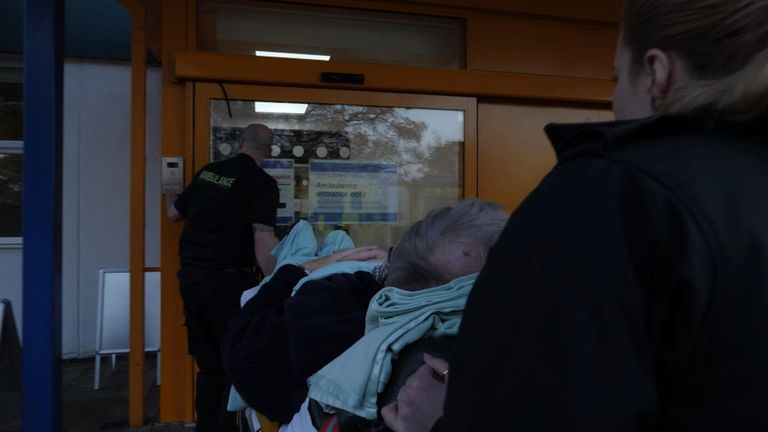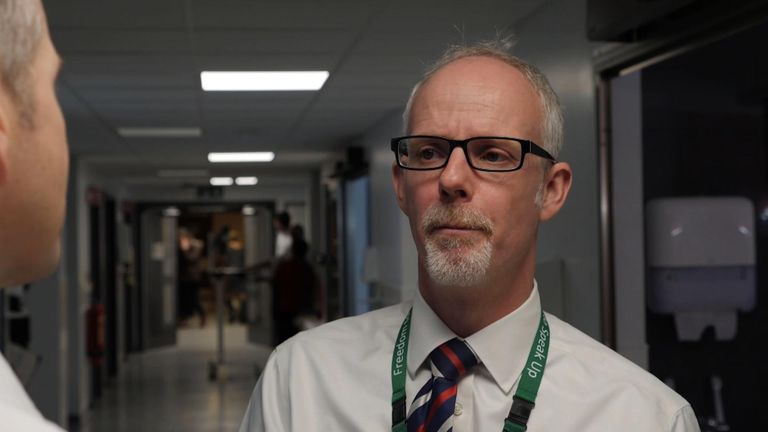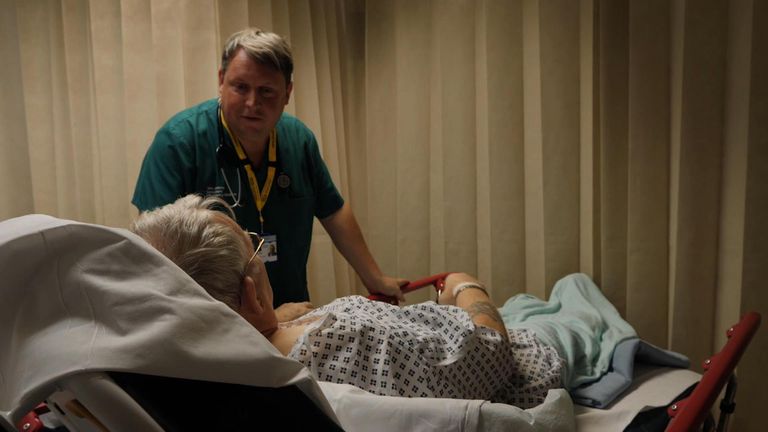West Suffolk Hospital: On the frontline of the NHS generational challenge
West Suffolk Hospital in Bury St Edmunds is, by many measures, the definition of an ordinary district general hospital.
Built in the 1970s, it has 465 beds and offers a full range of services, from cancer screening to cardiology, to a largely rural, increasingly elderly constituency.
In one area however, it is on the frontline of a generational challenge for the NHS.
Suffolk has the second-oldest population in England, and that demographic is driving an extraordinary rise in emergency admissions.
Demand at West Suffolk’s A&E department has long outstripped capacity, with between 170 and 220 attendances a day in a space designed for half as many.
But the story of this winter in the NHS, which has been milder and seen far less flu admissions than last year, is not of overall attendances rising, but the sharp increase in sicker, older patients requiring intensive treatment.
Across the NHS more than two million people attended A&E in November and December, a year-on-year increase of just over 2% expected to be confirmed when statistics for January are published on Thursday.
Demand for overnight beds across England has been even greater, with emergency admissions up 5.7% year-on-year.
At West Suffolk however, A&E attendances are up 6% for the year, and emergency admissions have risen by a startling 9%, almost double the national average.
In January, they were even higher – up 14.3% on the same month last year.
This trend, beyond what the hospital predicted, has put a huge strain on staff, but contingency planning put in place after last year’s bruising winter has helped them cope.
The key, according to chief executive Steve Dunn, has been closer co-operation with primary and social care, and the commitment of staff.
“This has been our busiest winter ever, but we have been planning more than ever before, we have brought on a new assessment unit and a new cardiac unit and we have brought in 50 more beds and recruited more people than we have ever had in the hospital,” he said.
“We are working in a different way, working with GPs, with the local community and social services to get people back into their homes and into their community to make sure we are doing the very best for the community.
“I don’t think we would have coped if we had not changed what we do.”
The hospital has expanded into every available corner of space, with the emergency waiting room and the ambulatory (walk-in) unit transformed into “escalation areas”, where patients can await admission at short notice.
It has also opened up to 78 extra beds to cope with demand, but staffing them safely is not straightforward, despite the hospital offering additional shifts and pay to nurses.
Helen Beard, head of nursing on the surgical ward, told us staff have felt the strain.
“We’ve been experiencing quite a lot of sickness in our staff,” she said. “I think there is a degree that people are quite exhausted, we’ve had quite a relentless period now of short staffing and deficits across the organisation, and capacity pressures continue, so people are becoming exhausted.
“It means we are going to have to look at areas that are a bit better staffed and deplete them down to a point where we would not necessarily want to, but it means that everyone is going to be stretched a little bit further if we can’t replace them.”
To help patients who need additional care return home safely, the hospital has introduced a new system – Pathway One.
Instead of considering a patient’s social care needs while they are still in hospital, they are assessed at home, with an occupational therapist and a representative of the local authority present. Together they establish what support they might need to remain independent, and crucially avoid readmission.
West Suffolk say the scheme has supported 96 patients since it began in October and has freed up almost 350 bed days, a significant contribution given the pressure on beds.
Schemes like Pathway One, in harness with other initiatives designed to reduce attendances and admissions, are considered the key to dealing with the inexorable pressure on NHS hospitals.
In April, the NHS will start seeing the benefit of the 3.4% five-year funding increase promised by the government, and will begin to implement a new long-term plan, which is predicated on an increased role for primary care – GPs, pharmacists and dentists – reducing demand and leaving hospitals to focus on the sickest patients.
There will also be a focus on “same-day” emergency care, with hospitals providing treatment that does not require overnight admission.
On the evidence of three days at West Suffolk Hospital, all these schemes will have to work at least as well as the most optimistic forecasts, and probably better, to deal with the demographic challenge facing the NHS.
Source: Read Full Article





